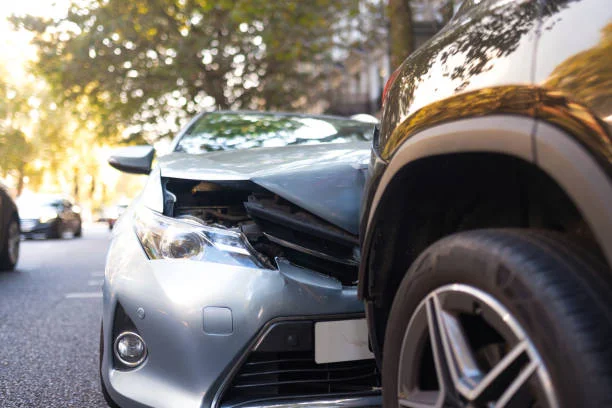Auto accidents are stressful under any circumstance, but the situation becomes more complex when the vehicle involved is leased or financed. In such cases, the ownership and liability structure differ significantly from those of a fully owned vehicle. The driver may still be making monthly payments, and the car’s legal title may be held by a leasing company or a financing institution. This creates unique challenges in insurance claims, repairs, and determining fault responsibility. We will explore how accidents involving leased or financed vehicles are handled, what obligations drivers face, and how to navigate insurance and liability issues effectively to protect both your finances and credit.
Discover another insight-packed post that perfectly complements what you just read.
Key Considerations When Dealing with Auto Accidents Involving Leased or Financed Vehicles
1. Understanding Ownership and Responsibility
When a car is leased or financed, the legal owner is not the driver but the lender or leasing company. This distinction plays a vital role in how accident claims are managed. In the event of an accident, the leasing company or lender must be notified immediately, as they hold a financial stake in the vehicle. For leased vehicles, the contract usually outlines detailed steps for reporting damage and repairs. Financed vehicles, on the other hand, involve a lender who retains the title until the loan is paid off.
The insurance policy typically lists the lender or leasing company as a “loss payee,” ensuring they receive compensation if the car is totaled. This relationship creates a three-party dynamic—driver, insurer, and owner—each with specific rights and responsibilities. Drivers who are uncertain about their legal or financial obligations after an accident can seek a free consultation with NYC car accident lawyer to better understand their rights and avoid disputes or delays in claims.
2. The Role of Insurance in Leased and Financed Car Accidents
Insurance coverage for leased or financed vehicles is often more extensive than for owned cars, as the lender or leasing company typically requires comprehensive and collision coverage. These policies protect against physical damage regardless of who is at fault. In addition, many lessors require “gap insurance,” which covers the difference between the car’s actual cash value and the remaining loan or lease balance if the vehicle is totaled. For example, if the car’s value drops faster than the loan balance is paid off, a total loss could leave the driver owing thousands.
Gap insurance prevents that financial burden. After an accident, the insurance provider assesses the damage and compensates the owner or lienholder directly. It’s also important for drivers to confirm that all required coverages are active; otherwise, they risk violating the financing or lease agreement, which could lead to financial and legal consequences.
3. Steps to Take Immediately After the Accident
In the event of an accident, drivers of leased or financed vehicles should follow a structured process to minimize complications and ensure a smooth resolution. First, ensure everyone’s safety and contact emergency services. Then, document the accident scene thoroughly—photos, witness statements, and police reports are critical. After that, notify both your insurance company and your leasing or financing institution. These parties must be informed promptly because the vehicle’s owner has a legal right to decide on repairs or total loss settlements. Failing to inform them could lead to a breach of contract. In some cases, the lease agreement specifies preferred repair facilities or parts that must be used to restore the car to factory standards. Keeping all communication transparent ensures that claims are processed efficiently and prevents disputes later.
4. Handling Repairs and Vehicle Replacement
When a leased or financed car is damaged, approval for repairs often depends on the leasing company or lender. They want to ensure the repairs meet quality standards since they technically own the car. The insurance company usually pays the repair shop directly, but the owner may be involved in approving the process. If the car is declared a total loss, the insurance payment typically goes to the lender or lessor first, with any remaining balance settled between them and the driver. If the insurance payout is less than the loan or lease amount, gap insurance covers the shortfall. Drivers without gap coverage, however, could end up owing money for a vehicle they can no longer drive. Understanding these procedures before an accident happens is vital to protect one’s financial stability and credit record.
5. Liability and Legal Implications in Leased or Financed Car Accidents
Determining liability becomes more intricate when the vehicle is leased or financed. While the driver is responsible for operating the car safely, the legal owner might still have some indirect exposure, especially if the lease or loan agreement includes clauses related to maintenance or authorized users. If another driver causes the accident, the responsible party’s insurance should cover the damages.
However, if the driver of the leased or financed car is at fault, they are accountable for both property damage and potential injuries Auto accidents. Legal disputes can arise if there is a disagreement over repair costs or depreciation value. Consulting with an attorney experienced in vehicle accident claims can be beneficial, especially when navigating insurance settlements and ownership rights. It ensures that both the driver’s and the lender’s interests are properly represented during the claims process.
Auto accidents involving leased or financed vehicles require more careful management than those involving owned cars, due to the added layers of financial and legal responsibility. The ownership structure, insurance requirements, and repair authorizations must all align to ensure a smooth claims process. By staying informed and proactive, drivers can fulfill their contractual duties, protect their credit, and resolve accident-related issues efficiently while ensuring compliance with both insurance and lending terms.
Explore more stories designed to spark curiosity and uncover hidden opportunities.






